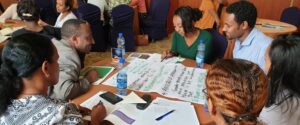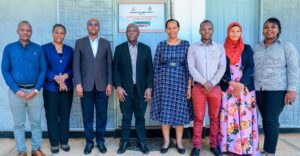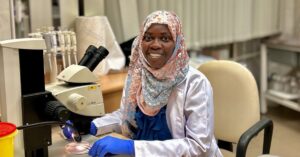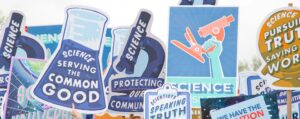
Making connections to improve research uptake
A comprehensive approach to research uptake is needed for researchers, research donors and other stakeholders to maximize the usefulness and use of research, writes John Young, with thanks to Emily Hayter for providing her insight into this post.
When I worked for ODI, in the early years of the Research and Policy in Development Programme, we did some research which identified six lessons and six steps to help researchers to develop engagement strategies for evidence-based policy making. These steps included identifying policy objectives, key influencers and what evidence they need, as well as communicating the research, developing a plan for policy engagement and ensuring you are monitoring and learning to check how this is going
These steps have been further refined in the RAPID Outcome Mapping Approach to Policy Engagement and Influence, and if you are a researcher wishing to influence policy and/or practice they remain substantially the same today.
But that is only one part of the process. Beyond researchers ensuring that their research is reaching policymakers, what can policymakers, research donors and civil society do to ensure research for development is useful and used?
That is what the Swedish International Development Cooperation Agency (Sida)’s Research Cooperation Strategy aims to address. The strategy has three components: 1) to strengthen the capacity of low-income countries to use research in the struggle against poverty; 2) to support international research of relevance to low income countries; and 3) to support Swedish research of relevance to low-income countries.
A couple of months ago I had the privilege of going to the Sida Science Days 2019 Conference in Stockholm. This meeting brought together nearly 200 people from 70 (or so) organizations that Sida funds to support and deliver its strategy. There were people there from universities in developing countries, people from Swedish universities, people from other international research organizations, and people from organizations supporting, rather than actually doing research – like INASP, SciDevNet, and African Journals Online. The purpose was to meet and share experiences and thoughts on how we can all collaborate and contribute to ensure that science improves the lives of the most vulnerable.
Putting research to use
On the afternoon of the first day I gave an introductory presentation as part of a session on how research can be put into use. I was followed by Fernanda Machungo from Eduardo Mondlane University in Maputo who gave a great example of where research contributed to a change in the law on abortions in Mozambique. There were also a couple of presentations about the value of international research collaborations linking and capitalizing on research programmes across many countries. Beatrice Halpaap from the Special Programme for Research and Training in Tropical Diseases at the WHO talked about action-research to develop health innovations, and Bruce Campbell who leads the Climate Change, Agriculture and Food Security (CCAFS) programme in the CGIAR talked about research to support climate-resilient villages.
The overall conclusions from this session were that there is no magic silver bullet that always works. It is very rare that single pieces of research have much impact. But there is much evidence that long-term interdisciplinary programmes focusing on the key challenges that bring together national researchers, policymakers and practitioners can be very influential. This is sometimes called transdisciplinarity.
This concept fits very well with INASP’s recognition of the importance of equitable knowledge ecosystems – “where diverse voices are recognized and those who commission, produce, communicate and use research and knowledge can work effectively together to bring the latest evidence to bear on the most pressing and intractable problems” – in building sustainable capacity for research production and use in developing countries.
A comprehensive approach
Transdisciplinary approaches, and an emphasis on research uptake are an important part of making sure research is useful and used, but, beyond that, we at INASP believe there are some key features that researchers, research donors and other stakeholders seeking to maximize the usefulness and use of research need to promote.
These are:
- Inclusivity: Often it’s a small group of ‘the usual suspects’ whose evidence influences policy. We need to consider whose voices are left out in the policy influence process, and ensure a diverse range of perspectives, including those from marginalized groups, feed into policy.
- A wide definition of evidence: Research is not the only form of evidence that should influence policy; citizen evidence, practice informed evidence and statistics are also critical to inform decision making. We should encourage decision makers to make use of all of the available evidence that is relevant.
- A thorough understanding of policymakers and users: Research uptake approaches must be informed by, and respond to, a nuanced understanding of the day to day realities faced by policy-making agencies—what is often called ‘the demand side’. The Context Matters Framework, developed by Politics & Ideas and INASP, can help with this.
- A strong emphasis on local actors: Local evidence producers usually have the best understanding of the local context and the kind of evidence that influences decision makers. Strong local research systems are essential for effective research uptake for development. The support that INASP’s AuthorAID project provides to Southern researchers can help strengthen these local systems and help empower local evidence producers.
- A holistic approach to capacity development: Developing capacity for research uptake is not only about strengthening individual skills of researchers, but also about building organizational capacities and cultures in research institutions which can enable research to have an impact on policy.
- Adaptive, flexible and learning driven approaches: Like any other effort to influence change, research uptake approaches should adapt and respond to changes in the external context, as well as to learning from within the initiative.
INASP has a long history and strong foundations supporting researchers to produce and communicate the results of their research in academic publications, and working with policymakers and legislators to help them to use research. But working directly on research uptake is relatively new for us. Making the links – and supporting researchers, policymakers and others to make those links – is a logical progression for INASP and an important opportunity to help ensure that decisions are based on the best and most contextually relevant research and knowledge.

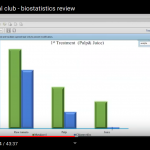 Previous Post
Previous Post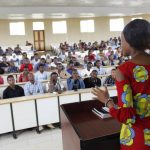 Next Post
Next Post